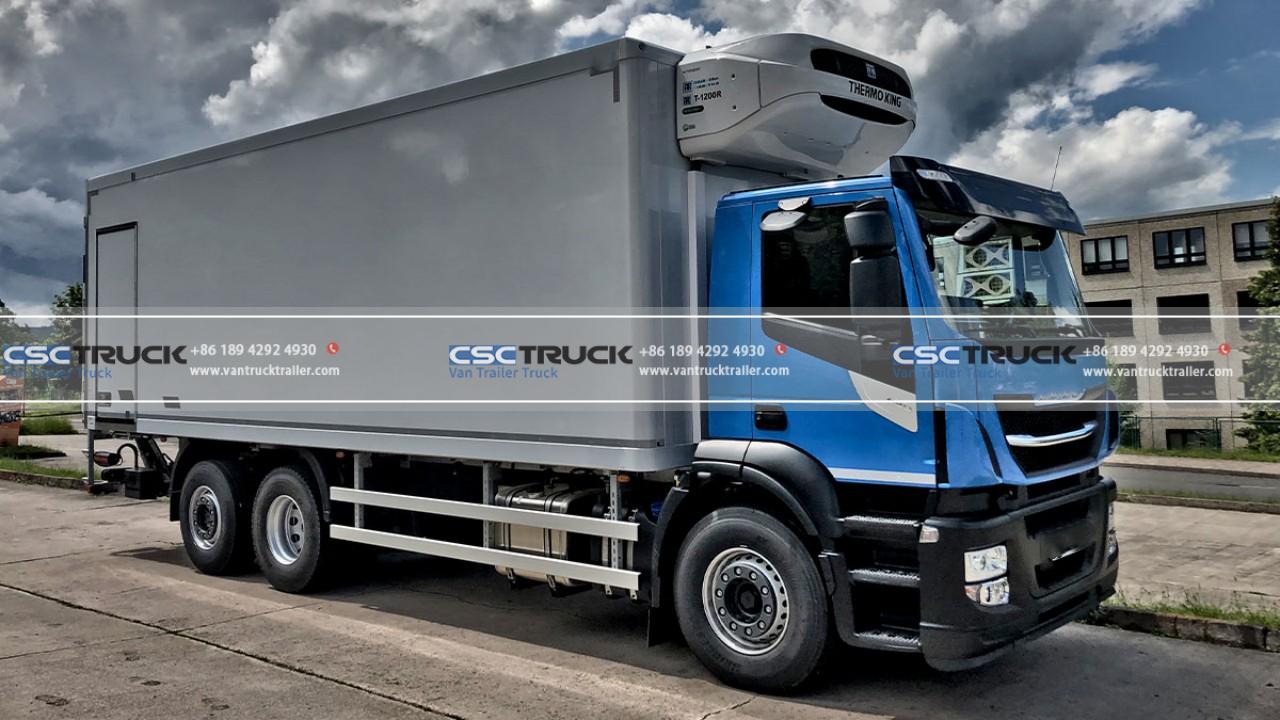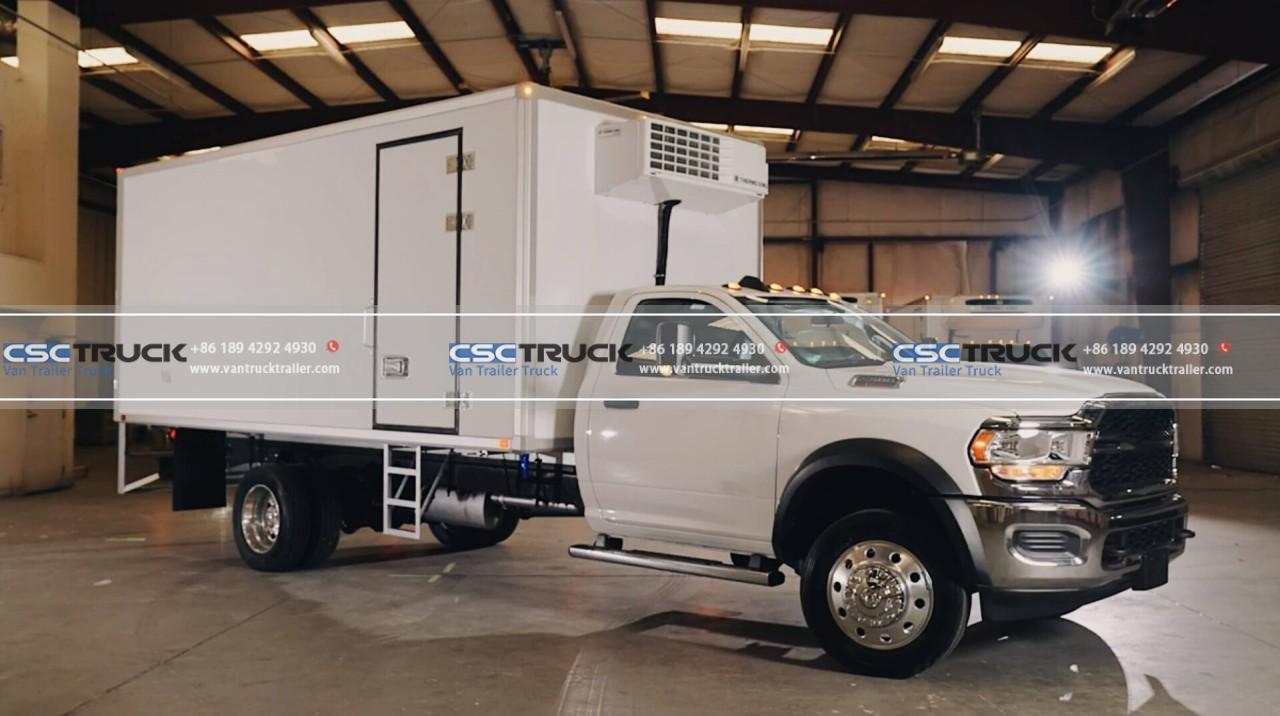Refrigerated trucks play a vital role in transporting perishable goods, ensuring they remain fresh and safe for consumption. These trucks rely on advanced refrigeration systems to maintain low temperatures and preserve the quality of the cargo during transportation. In this article, we will explore the different types of refrigeration systems commonly used in refrigerated trucks.
- Mechanical Compression Refrigeration System: The mechanical compression refrigeration system is the most widely used type of refrigeration system in refrigerated trucks. It operates based on the principles of compression and expansion of refrigerant gases. The system consists of a compressor, condenser, expansion valve, and evaporator. The compressor compresses the refrigerant gas, raising its temperature and pressure. The heated gas then passes through the condenser, where it loses heat and turns into a high-pressure liquid. The expansion valve regulates the flow of refrigerant into the evaporator, causing it to evaporate and absorb heat from the cargo, thus cooling it down. This cycle repeats continuously, ensuring the cargo remains at the desired temperature.
- Liquid Nitrogen Refrigeration System: Liquid nitrogen refrigeration systems have gained popularity in recent years due to their efficiency and environmental benefits. This system utilizes liquid nitrogen, which is stored in a tank on the truck. The liquid nitrogen is then vaporized and circulated throughout the cargo area, creating a cold environment. This type of refrigeration system is especially useful for transporting highly temperature-sensitive goods, as it can rapidly cool down the cargo and maintain extremely low temperatures. Additionally, liquid nitrogen does not produce greenhouse gas emissions, making it an eco-friendly alternative to traditional refrigerants.
- Eutectic Refrigeration System: Eutectic refrigeration systems are commonly used in refrigerated trucks for short-distance deliveries or when the truck needs to be parked for an extended period. This system utilizes eutectic plates or coolants, which are pre-chilled in a freezer unit before the truck departs. These plates are then strategically placed within the cargo area, acting as a source of cooling. As the plates gradually thaw, they release the stored cold energy, maintaining the desired temperature inside the truck. This type of system is advantageous in scenarios where the refrigeration unit needs to be turned off temporarily or when the power supply is limited.
- Cryogenic Refrigeration System: Cryogenic refrigeration systems are known for their ability to maintain ultra-low temperatures. These systems utilize cryogenic substances such as liquid nitrogen or liquid carbon dioxide as refrigerants. The cryogenic substance is stored in a tank and released into the cargo area through a controlled valve. As it expands, it rapidly cools the surrounding environment. Cryogenic refrigeration systems are commonly used for transporting goods that require deep freezing, such as ice cream, pharmaceuticals, and biomedical materials. However, due to the extreme cold temperatures involved, proper insulation and safety measures are essential when using this type of system.
- Thermoelectric Refrigeration System: Thermoelectric refrigeration systems, also known as Peltier cooling, operate based on the thermoelectric effect. These systems use the flow of electric current through two dissimilar materials to create a temperature difference. When the current flows, one side of the junction becomes hot while the other side becomes cold. Thermoelectric systems are compact, lightweight, and have no moving parts, making them suitable for small refrigerated compartments in trucks. However, they are less efficient compared to other refrigeration systems and are typically used for maintaining slightly lower temperatures rather than deep freezing.
In conclusion, refrigerated trucks rely on various types of refrigeration systems to keep perishable goods fresh during transportation. From the widely used mechanical compression refrigeration system to the advanced liquid nitrogen and cryogenic systems, each type of system offers unique advantages and is suitable for specific applications.
The mechanical compression refrigeration system remains the standard choice for most refrigerated trucks due to its reliability and efficiency. It has been tried and tested over the years and offers precise temperature control, making it suitable for a wide range of perishable goods. The availability of spare parts and trained technicians also contributes to its popularity.
Liquid nitrogen refrigeration systems have gained traction due to their ability to rapidly cool down cargo and maintain extremely low temperatures. This makes them ideal for transporting goods that require ultra-cold conditions, such as certain medical supplies or frozen food products. Additionally, the use of liquid nitrogen as a refrigerant is environmentally friendly, as it does not contribute to ozone depletion or global warming.

Eutectic refrigeration systems provide a practical solution for short-distance deliveries or situations where the refrigeration unit needs to be temporarily turned off. By pre-chilling eutectic plates or coolants, these systems can maintain the desired temperature within the cargo area for an extended period without relying on a continuous power supply. They are cost-effective and suitable for scenarios where power availability may be limited.
Cryogenic refrigeration systems excel in maintaining ultra-low temperatures, making them indispensable for transporting goods that require deep freezing. The extreme cold temperatures achieved with cryogenic substances ensure the preservation of delicate items, such as biomedical materials or certain pharmaceuticals. However, the use of cryogenic systems requires careful insulation and safety measures to protect both the cargo and the individuals handling it.
Thermoelectric refrigeration systems offer a compact and lightweight solution for small refrigerated compartments. While they are less efficient compared to other systems, they are suitable for applications that require slightly lower temperatures rather than deep freezing. Thermoelectric systems are often used in refrigerated trucks for specific purposes, such as cooling beverages or maintaining the freshness of fruits and vegetables.

It is important to note that the selection of a refrigeration system for a refrigerated truck depends on various factors, including the type of goods being transported, the desired temperature range, energy efficiency requirements, and the duration of transportation. Additionally, proper maintenance and monitoring of the refrigeration system are crucial to ensure its optimal performance and prevent any disruptions in the cold chain.
In conclusion, refrigerated trucks rely on a range of refrigeration systems to ensure the safe and efficient transportation of perishable goods. From the traditional mechanical compression systems to the innovative use of liquid nitrogen, eutectic plates, cryogenic substances, and thermoelectric cooling, each system offers unique features to meet specific requirements. As technology advances, we can expect further advancements in refrigeration systems, making the transportation of perishable goods even more efficient and sustainable in the future.


